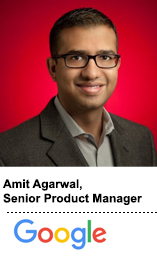 Google launched a customer call center measurement and attribution solution on Wednesday alongside new research on call-based marketing.
Google launched a customer call center measurement and attribution solution on Wednesday alongside new research on call-based marketing.
The product uses a unique identifier placed on Google’s search ads with tap-to-call functionality to tie inbound calls to an AdWords campaign. If the user goes to the company site instead and ends up making a call from there (the research also includes ways to prompt more calls from a mobile site), Google’s identifier tracks that as well.
There are limitations in scale and application – it only works for Google search campaigns and when users engage directly from the ad.
But “users want to have conversations with businesses,” said Amit Agarwal, Google senior product manager for mobile search ads. “And we need to provide all the different channels where users would like to interact with a business.”
Call-center marketing and sales may not be a sexy new channel, but direct customer calls have accelerated alongside smartphone adoption. And upselling or cross-selling over the phone has an outsized importance in key enterprise categories, like travel and hospitality, telco, finance and insurance.
Google’s product is meant to tie the performance of a call center to a business’s Google search campaigns. For instance, a generic search for hotel deals in Las Vegas shows travel intent, but someone searching for a specific kind of room or type of hotel is closer to booking, according to Google’s research.
“Businesses need to figure out how to distinguish between valuable premium callers and others,” said Agarwal.
And, of course, “valuable callers” is a euphemism for Google users. “When a user is calling from a paid search ad, they should be ranked higher,” because they’re demonstrably more likely to result in a sale, he said.
And as with many new Google products, call center measurement is also an incentive to feed more marketing data back into Google.
“We can now import actual policy sales driven by calls directly into AdWords,” said Jordan Jones, associate director digital performance at the IPG agency Universal McCann (UM), which represents the insurance provider Nationwide, a pilot partner on Google’s call extension measurement.
“With this data, we can make better decisions about where to spend marketing budget, keyword bids & positioning and campaign optimization,” said Jones.
The product ties sales and call-based marketing performance back to search but also gives Google more visibility (and attributable impact) into sales conversions and lead generation.
The search terms that are effective for generating calls don’t necessarily match the terms that best drive ecommerce sales or retail foot traffic, said Agarwal. If a campaign’s ideal outcome is a potential customer calling a sales rep (who, for insurance, finance or telco companies, are better at bundling products and earning commissions than online sign-ups), there can be a real difference between a campaign optimizing for call performance vs. optimizing toward web traffic.
If Nationwide and its agency put more value on callers than on mobile site visitors, then that’s what Google is going to give them. Jones said that “even though it’s still early since including imported call conversions into campaign optimization, we’ve been able to increase spend on top-performing, call-driving terms by nearly three times.”














